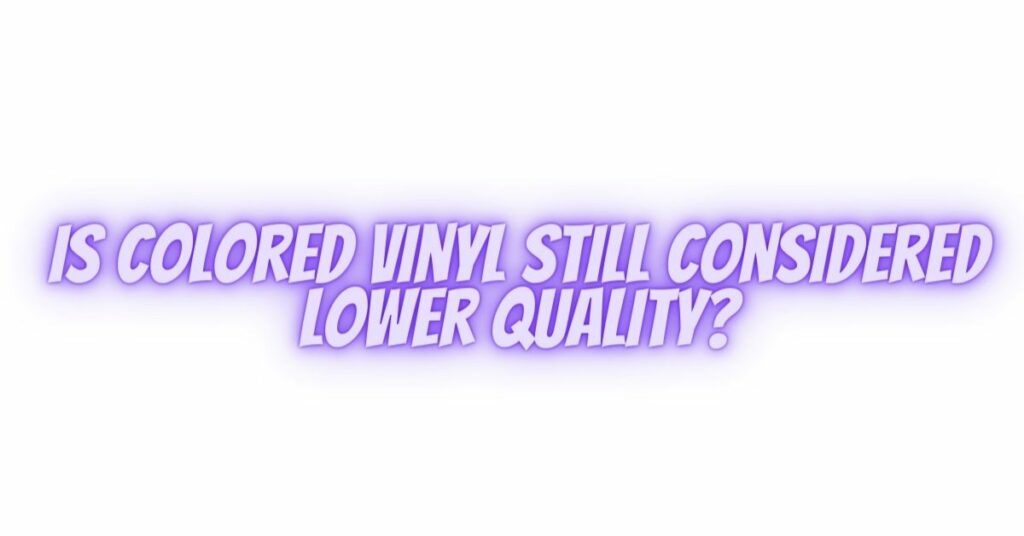For decades, colored vinyl records were often viewed as an unconventional novelty, with an assumption that they might deliver lower sound quality compared to their traditional black counterparts. However, the landscape of colored vinyl records has evolved significantly, and the question of whether colored vinyl is still considered lower quality is worth revisiting. In this comprehensive article, we will explore the developments in colored vinyl production, the factors that impact sound quality, and whether colored vinyl remains inferior in terms of audio performance.
The Evolution of Colored Vinyl
Colored vinyl records have seen a transformation in production quality over the years, challenging the historical perception of being inferior. These changes have helped colored vinyl gain recognition as a respected and even coveted medium among audiophiles and collectors. Key developments include:
- Improved Materials: Advancements in vinyl manufacturing have led to higher-quality PVC compounds used in colored vinyl production. These improved materials help reduce impurities and variations that could affect sound quality.
- Enhanced Pressing Techniques: Modern pressing plants employ high-quality equipment and experienced operators to produce colored vinyl records. This has led to a reduction in pressing defects, which may have been more common in the past.
- Equalized Groove Specifications: Contemporary colored vinyl often adheres to the same groove specifications as traditional black vinyl. This consistency ensures that sound quality is not compromised due to variations in groove depth or width.
- Professional Mastering: The mastering process for colored vinyl has seen substantial improvements, with an emphasis on maintaining the same sound fidelity as black vinyl counterparts.
Factors Influencing Sound Quality
Sound quality in colored vinyl records is influenced by several critical factors, similar to traditional black vinyl:
- Vinyl Material Quality: The quality of the PVC material used in colored vinyl records is crucial for sound quality. High-quality PVC with minimal impurities is essential for accurate sound reproduction.
- Pressing Quality: Precision in the pressing process, proper equipment maintenance, and skilled operators are essential to ensure that both colored and black vinyl records are well-pressed.
- Groove Specifications: Standardized groove specifications ensure that the depth and width of grooves are consistent between colored and black vinyl.
- Mastering and Production: High-quality mastering and attention to detail during recording, cutting, and pressing are vital for both colored and black vinyl.
- Turntable Setup: The quality of the turntable, cartridge, tonearm, and phono preamp, along with proper setup and calibration, is crucial for determining sound quality. The setup process is the same for both colored and black vinyl.
Sound Quality Assessment
The quality of sound from colored vinyl records is increasingly comparable to that of traditional black vinyl, and audiophiles often appreciate their unique and visually appealing nature. The perception of inferior sound quality in colored vinyl is gradually dissipating, with an understanding that other factors, such as mastering, pressing quality, and turntable setup, play a more significant role in determining sound quality.
Conclusion
The question of whether colored vinyl is still considered lower quality is increasingly answered with a resounding “no.” Modern advancements in vinyl manufacturing, pressing techniques, and an emphasis on equalizing groove specifications have led to a significant improvement in the sound quality of colored vinyl records. Audiophiles, collectors, and music enthusiasts have come to appreciate the visual and auditory qualities of colored vinyl, recognizing that their perceived sound quality is now on par with their traditional black counterparts. Colored vinyl has evolved from being seen as a novelty to a medium that offers both aesthetic and auditory delight.


